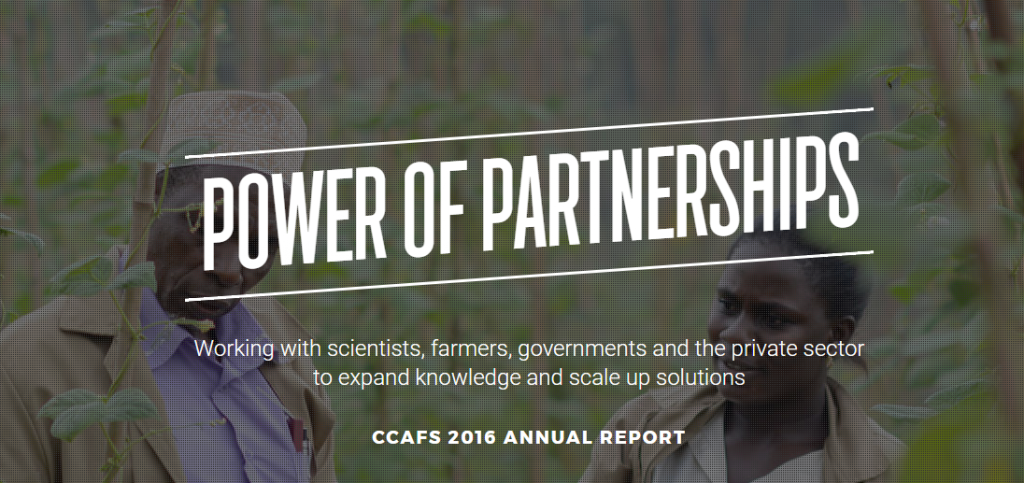Power of partnerships: CCAFS 2016 Annual Report highlights

Significant progress on agriculture under climate change was made in 2016; discover the most recent outcomes and innovations from CCAFS and partners in the 2016 Annual Report.
The power of partnerships – in helping foster outcomes and contributing to important scientific outputs – is the theme of our 2016 annual report and a key strategy that will continue to inform CCAFS going forward."
Bruce Campbell, Director, CCAFS
Read the CCAFS 2016 Annual report
Impact through policies and partnerships
In more than 20 countries, CCAFS researchers collaborated in farmers' fields and in global initiatives and with farmers, civil society, governments and researchers to help advance the concepts and practices around climate-smart agriculture.
In South Asia, CCAFS is working with rural communities to expand Climate-Smart Villages. In 2016, governments, private sector and development partners committed to scaling up the climate-smart village approach and related local actions in more than 2,000 villages in South Asia. This involves building portfolios of interventions together with farmers, National Agricultural Research Systems, CGIAR centers, local universities, non-governmental organizations, the private sector and farmers’ groups.
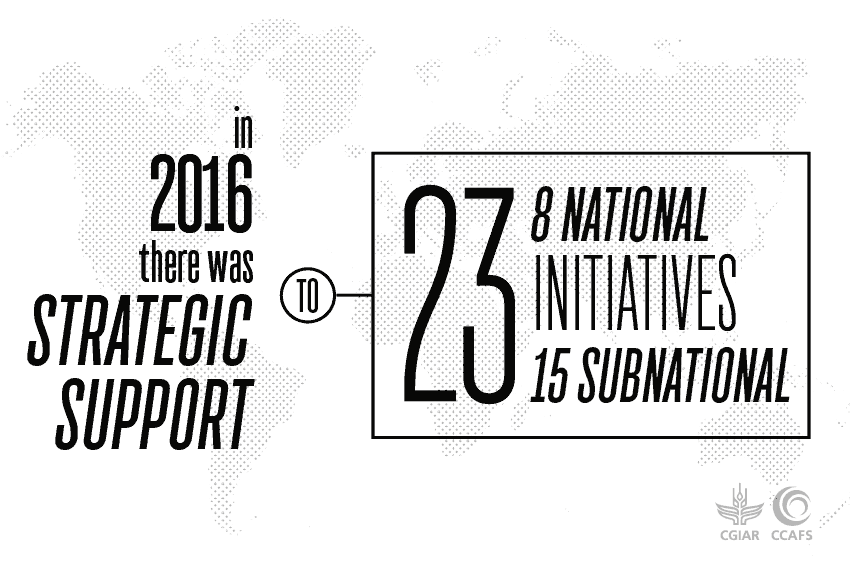
Read more stories about impact through policies and partnerships in the annual report
Capacity development and innovative communication
Smallholder farmers in the developing world are particularly vulnerable to the impacts of climate fluctuations and weather extremes. Supporting farmers with weather and climate information services for agricultural decision-making is an essential strategy for enhancing food security in already vulnerable areas, and a key component of climate-smart agriculture. Although existing initiatives have been successful in reaching out to some smallholder farmers, the challenge of broadening the on-the-ground impact of climate services for vulnerable communities remains.
In Colombia, CCAFS and the International Center for Tropical Agriculture (CIAT) worked closely with the Ministry of Agriculture and Rural Development to strengthen the adaptive capacity of farmers to climate variability. CIAT-CCAFS’ agroclimatic prediction science has profoundly changed how agricultural sector organizations generate and share climate variability adaptation recommendations.
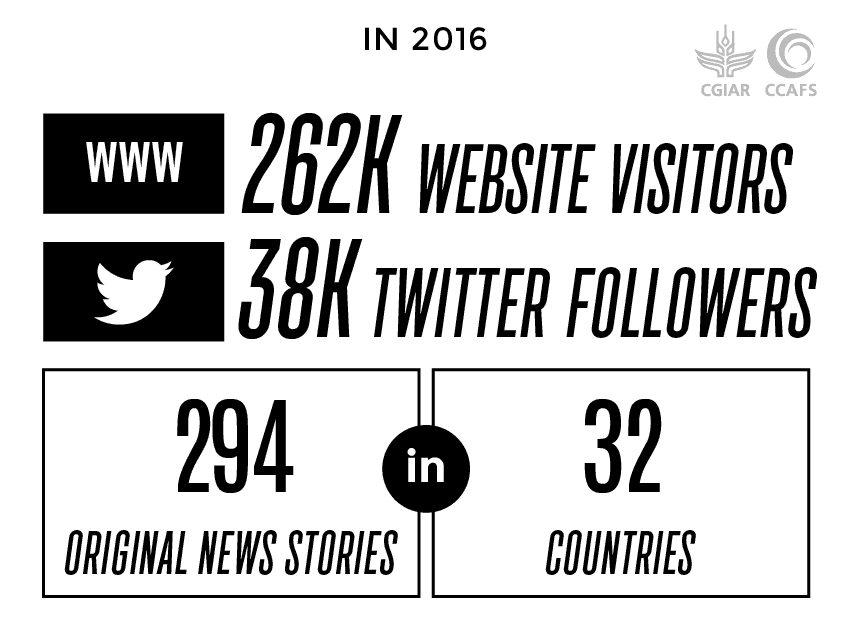
Read more stories about capacity development and innovative communication in the annual report
Breakthrough science and innovation
In climate change plans submitted to the United Nations in 2016, 104 countries included intentions to reduce emissions in the agriculture sector, but no global target for mitigation from agriculture had been set. To fill this gap, scientists from CCAFS, with partners from 5 CGIAR centers (CIAT, CIFOR, CIMMYT, ILRI and IRRI) and 15 organizations, calculated, for the first time, the amount of agricultural emission reductions needed to limit warming to 2°C in 2100. They found that annual emissions from agriculture must be reduced by 1 gigatonne of carbon dioxide equivalents per year (GtCO2e/yr) by 2030 to stay within the 2°C limit, and that the incremental actions we are taking will be insufficient for meeting this target. Scientists called for urgent development and implementation of transformative technical options.
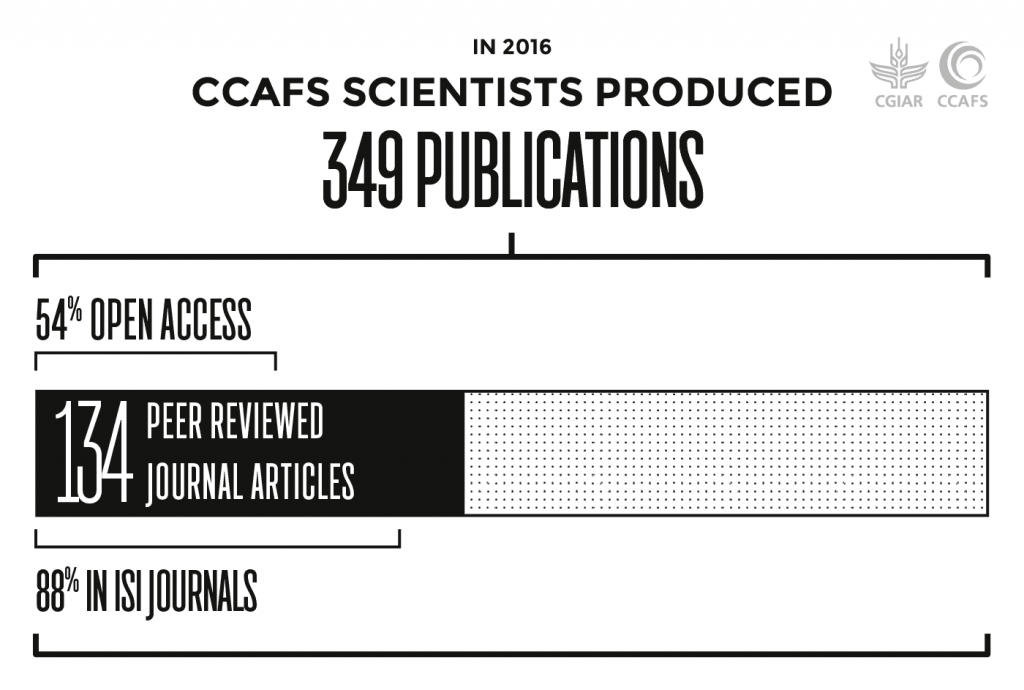
Read more stories about breakthrough science and innovation in the annual report
Integrating gender and youth
Exchange visits among rural communities show farmers how others are adapting and building resilience to climate change. CCAFS uses a “farms of the future” approach and organizes trips for community leaders to places that have a climate that is similar to what their communities might experience in the future. Farmers are able to see what they can do now and how they can prepare for the future.
A visit organized for leaders from Daga-Birame – a CCAFS Climate-Smart Village in Senegal – showed a path to economic opportunity from agroforestry. Women farmers from Daga-Birame were inspired to create a "one woman, one fruit tree" juice business to generate income and increase nutrition immediately, and they joined resources to plant fruit-bearing trees, an investment in future income and nutrition.
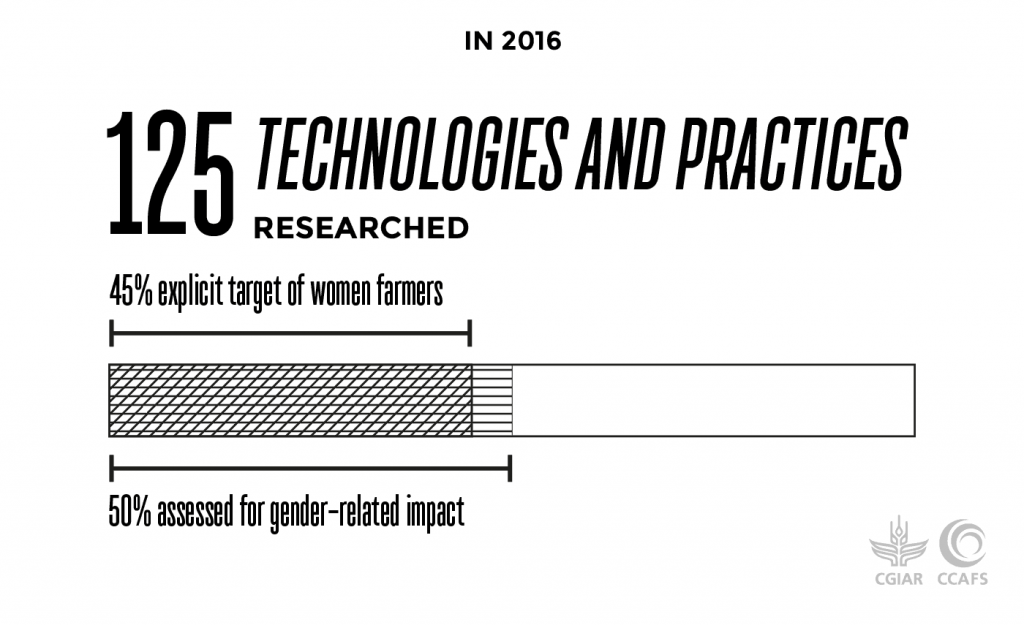
Read more stories about integrating gender and youth in the annual report
Way forward
The successful initiatives highlighted in the 2016 Annual Report demonstrate that partnership is crucial to achieve outcomes. As Bruce Campbell writes:
The power of partnerships is vast, as are the increasingly urgent climate change adaptation and mitigation challenges faced by smallholder farmers. In Phase II we have to achieve even more – partnerships are central to that ambition.
Read the CCAFS 2016 Annual report
Lili Szilagyi is a Communications Consultant at the CCAFS Program Management Unit.

